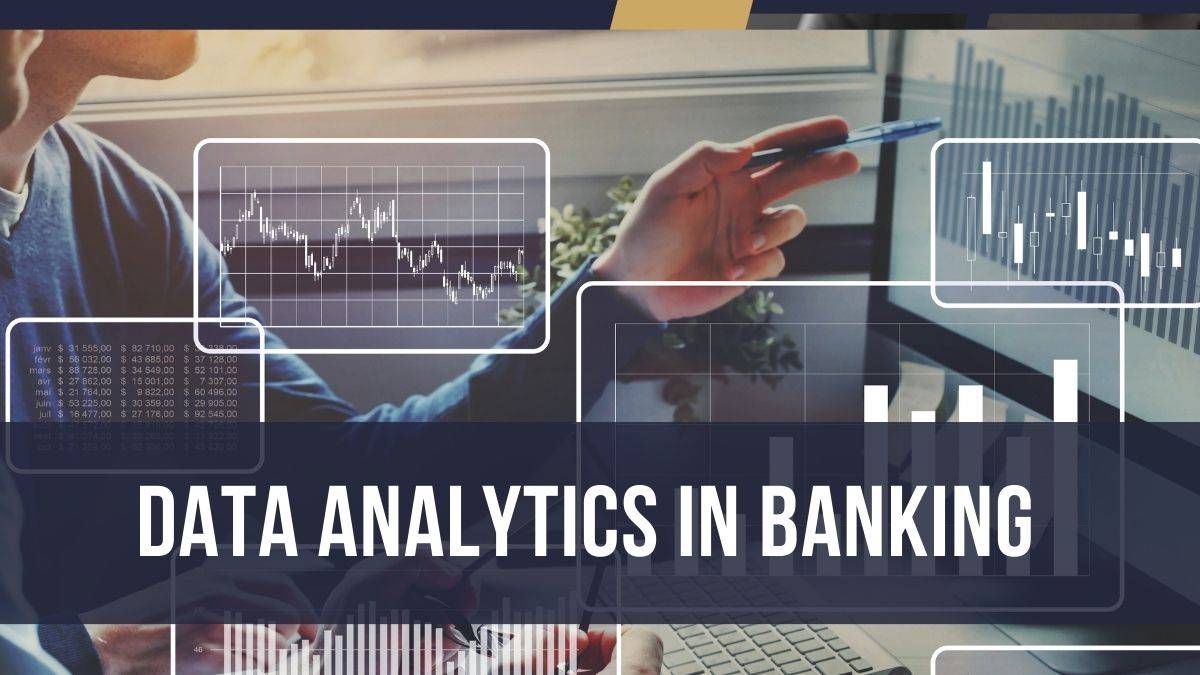Interactions and transactions are happening more and more online, data visualisation becomes very crucial. Every day, banks and other financial institutions are overflowing with enormous volumes of data from market movements to consumer transactions. Using this data well calls for tools and methods that clarify complexity, offer insights, and assist in decision-making. Among these instruments, data visualisation is clearly a pillar of digital transformation in banking.
A developer from SciChart, a leading provider of advanced data visualization solutions, noted, “In digital banking, where precision and clarity can make or break decisions, using the right data visualization tools is crucial. Charting technologies have evolved to handle high-performance needs, allowing institutions to process and display massive datasets seamlessly. It’s not just about the visuals—it’s about empowering users to explore data meaningfully.” This insight underscores the growing sophistication and necessity of advanced data visualization techniques.
The Importance of Data Visualization in Banking
Banking is no longer confined to traditional brick-and-mortar setups. Mobile apps, online platforms, and emerging fintech innovations have redefined how customers interact with their financial data. In this environment, the need for clear, actionable data presentation becomes critical. Customers expect real-time updates, intuitive interfaces, and the ability to make informed decisions with ease.
Data visualization bridges the gap between raw data and actionable insight. For instance, dashboards in banking apps allow users to monitor their spending, investments, and savings. By using interactive and real-time visual elements such as Scichart’s JavaScript charts, these platforms provide a clear snapshot of financial health. While JavaScript charts are not the sole technology driving this trend, their flexibility and performance have made them popular in crafting dynamic and responsive user experiences.
In addition to enhancing customer experience, data visualization is indispensable for internal banking operations. Fraud detection, risk analysis, and compliance monitoring often rely on analyzing large datasets. Visualizations help employees identify patterns and anomalies that may otherwise go unnoticed. For example, a heatmap showing unusual transaction activity across different geographic regions can help fraud analysts pinpoint areas of concern more efficiently than reviewing rows of data.
Enhancing Customer Engagement Through Visualization
Customer engagement has become a key differentiator for banks seeking to retain loyalty in a competitive market. Personal finance management tools are a prime example of how data visualization plays a pivotal role in digital banking. These tools aggregate transaction data and present it in user-friendly formats such as pie charts, bar graphs, and line charts.
For instance, a customer might use their banking app to track monthly expenses across categories like groceries, utilities, and entertainment. The visual representation of spending patterns allows for better budgeting and financial planning. Banks that offer such features gain a competitive edge by providing added value to their customers.
Moreover, visual storytelling through interactive dashboards fosters trust and transparency. When customers can easily understand the fees, interest rates, or investment returns associated with their accounts, they are more likely to feel confident in their financial decisions. This confidence strengthens their relationship with the bank.
Data Visualization in Risk Management and Fraud Detection
Risk management is another critical area where data visualization proves invaluable. Banks operate in a highly regulated environment, requiring them to mitigate risks while complying with stringent legal and financial standards. To achieve this, they must analyze vast datasets for potential vulnerabilities and areas of exposure.
Visual tools enable risk analysts to map complex relationships between variables, such as credit scores, transaction histories, and repayment behaviors. For example, a scatter plot might highlight correlations between customers with high credit utilization and late payments, helping banks adjust their lending strategies accordingly.
In fraud detection, speed is of the essence. Suspicious activities often manifest as patterns within datasets, such as repeated transactions from unfamiliar locations or unusually high withdrawals in a short period. Visualization tools like timeline charts and geospatial maps help fraud teams identify and act on these patterns quickly. JavaScript charts, with their ability to handle dynamic and interactive data visualizations, often play a role in such high-stakes scenarios.
Leveraging Real-Time Data for Decision-Making
One of the most significant advancements in digital banking is the ability to process and visualize real-time data. In the past, banks relied on static reports generated at specific intervals. However, the digital age demands agility, where decisions must be made based on the latest information.
Real-time data visualization provides immediate insights into market trends, customer behavior, and operational performance. For instance, during stock market fluctuations, banks can use real-time line charts to track indices and individual stock performance, providing their customers with up-to-the-minute investment advice.
Similarly, operational dashboards allow banking executives to monitor key performance indicators (KPIs) such as transaction volumes, customer onboarding rates, and loan approvals. These visualizations help executives make informed decisions, identify bottlenecks, and optimize processes.
The Role of JavaScript Charts in Modern Banking Platforms
JavaScript charts have emerged as a go-to solution for implementing responsive and interactive visualizations in banking applications. They integrate seamlessly with web technologies, enabling developers to create feature-rich dashboards that perform well across devices. Whether it’s a line chart tracking stock prices or a pie chart illustrating portfolio allocations, JavaScript charts provide the flexibility and scalability needed for modern digital banking platforms.
One advantage of using JavaScript charts is their ability to handle large datasets efficiently. With banking data often spanning millions of records, performance is a critical consideration. JavaScript libraries like SciChart and others offer optimized rendering techniques that ensure smooth interactions, even with high data volumes.
Furthermore, JavaScript charts support interactivity, allowing users to zoom, pan, and filter data in real time. This interactivity transforms static visuals into dynamic tools for exploration, empowering users to uncover insights independently.
Visual Analytics and AI in Banking
The integration of artificial intelligence (AI) with data visualization has opened new frontiers in digital banking. AI algorithms can process complex datasets to identify patterns, anomalies, and trends. When paired with visual analytics, these insights become actionable.
For example, predictive analytics models can forecast customer churn rates based on historical data. Visualizing these forecasts in the form of trend lines or heatmaps enables banking executives to develop targeted retention strategies. Similarly, machine learning algorithms can detect fraudulent transactions, while visualization tools display these anomalies in a manner that facilitates rapid response.
AI-driven personalization is another area where visual analytics shines. By analyzing customer behavior, banks can tailor their product offerings and marketing campaigns. Visual dashboards allow marketing teams to track the effectiveness of these initiatives and refine their strategies accordingly.
Challenges and Future Trends in Banking Visualization
Despite its many benefits, implementing effective data visualization in banking comes with challenges. One significant hurdle is ensuring data accuracy and integrity. Visualizations are only as reliable as the underlying data, making robust data governance practices essential.
Another challenge lies in designing user-friendly interfaces. While advanced visualizations are powerful, they must remain accessible to non-technical users. Achieving this balance requires collaboration between designers, developers, and data analysts.
Looking ahead, the future of data visualization in digital banking is promising. Innovations such as augmented reality (AR) and virtual reality (VR) could transform how users interact with financial data. Imagine a virtual environment where customers can explore their financial portfolios in 3D or bankers can visualize market trends in immersive spaces.
Additionally, the rise of blockchain technology presents new opportunities for visualization. As blockchain transactions generate vast amounts of data, visual tools will be critical in making this information understandable and actionable.
Conclusion
Data visualization is no longer a luxury but a necessity in the digital banking era. It enables banks to make sense of complex datasets, enhance customer experiences, and stay competitive in a fast-paced market. By leveraging tools like JavaScript charts, banks can create interactive and dynamic platforms that meet the demands of modern users.
As technology continues to evolve, the role of data visualization in banking will only grow. From real-time analytics to AI-driven insights, the possibilities are vast and transformative. Financial institutions that embrace these advancements will not only thrive but also set new benchmarks for innovation and customer satisfaction in the digital age.




